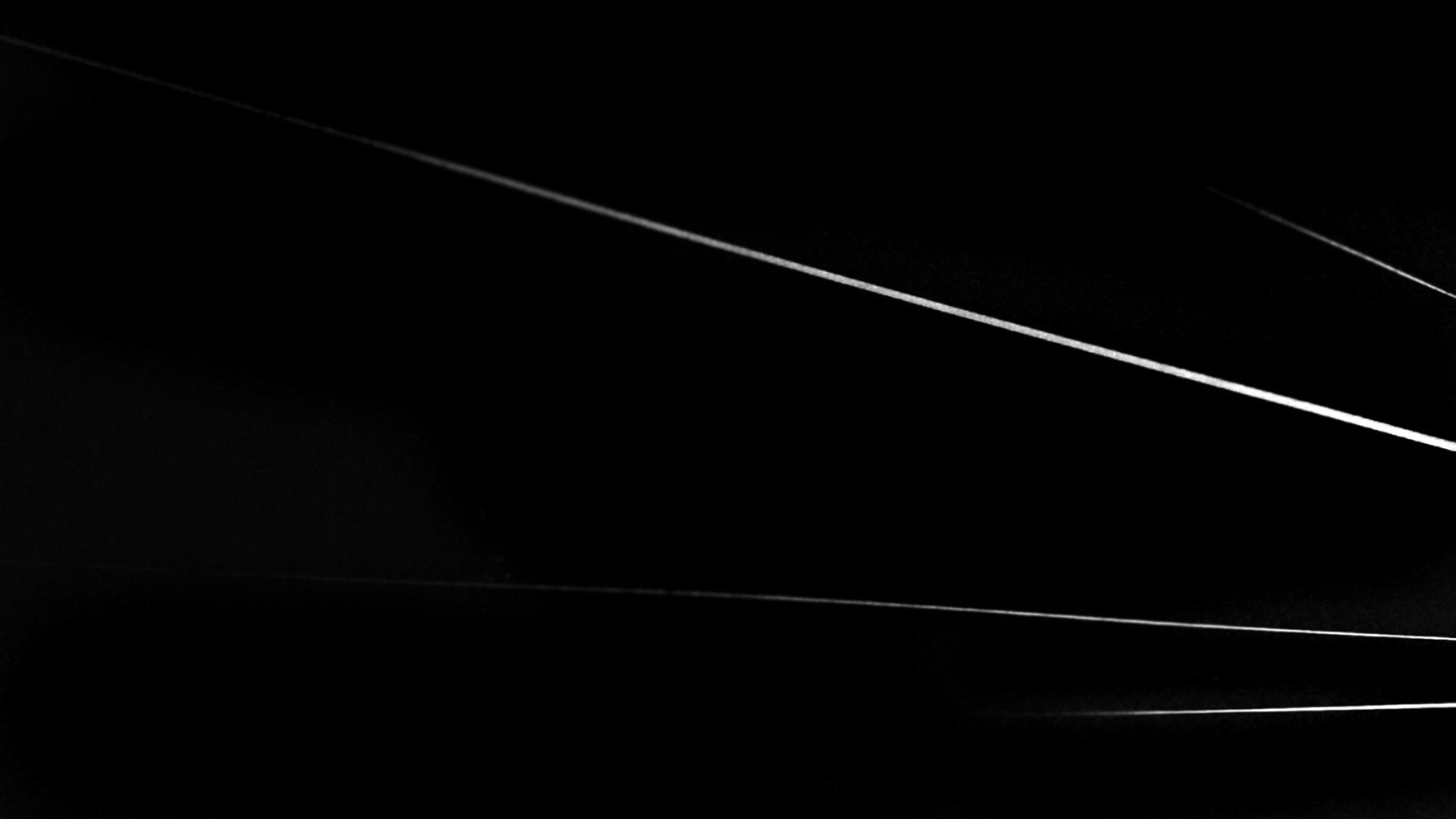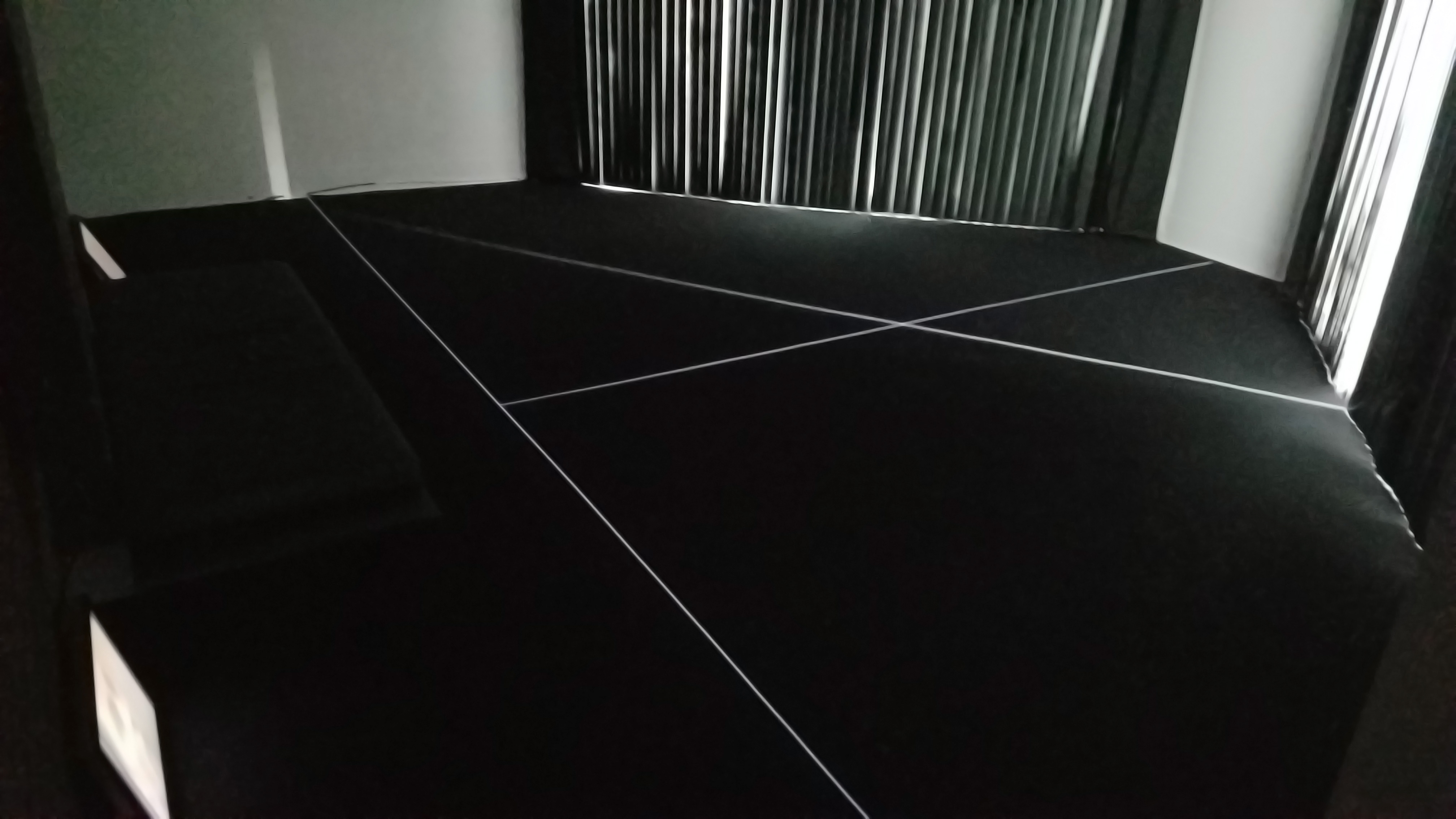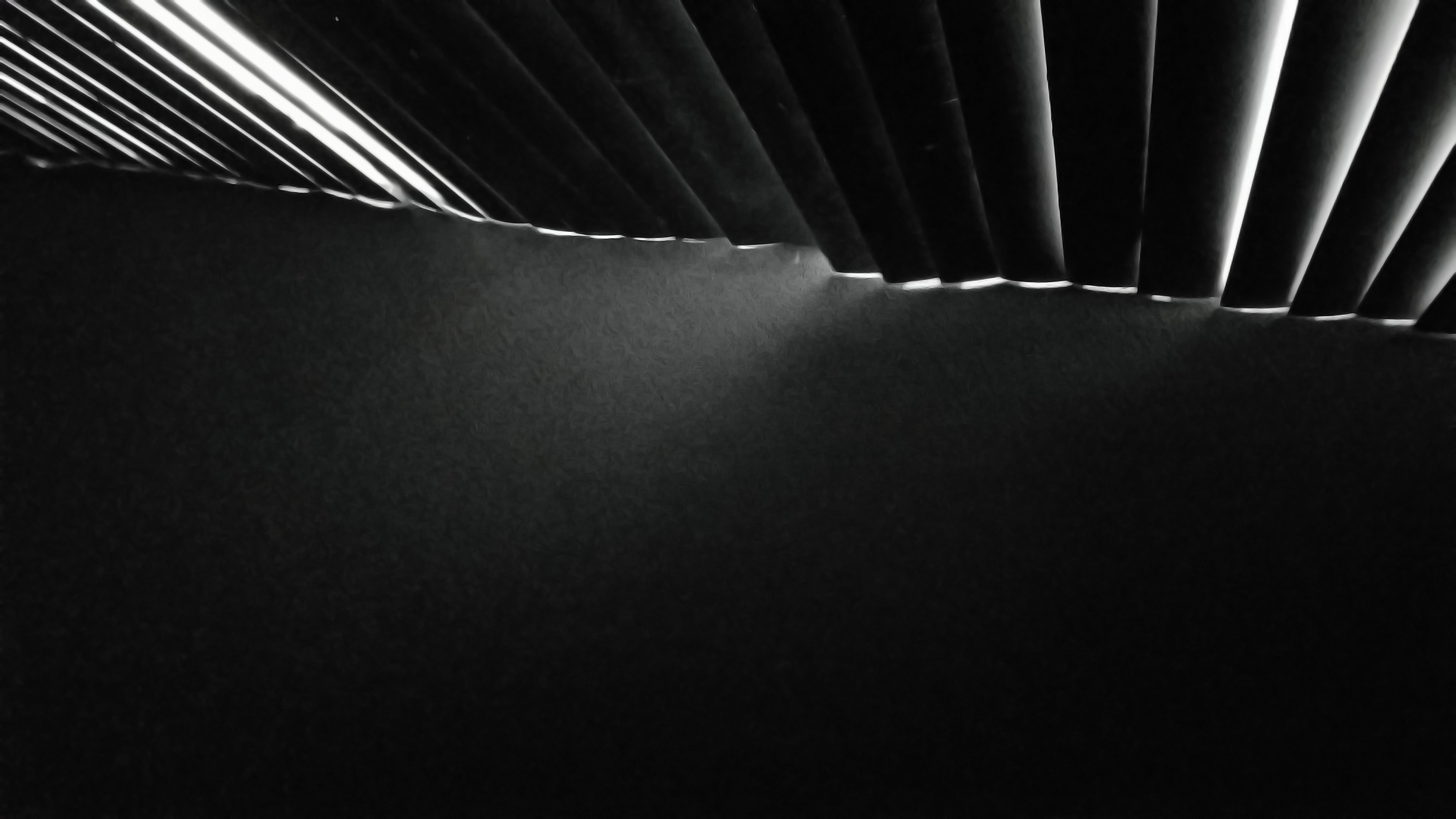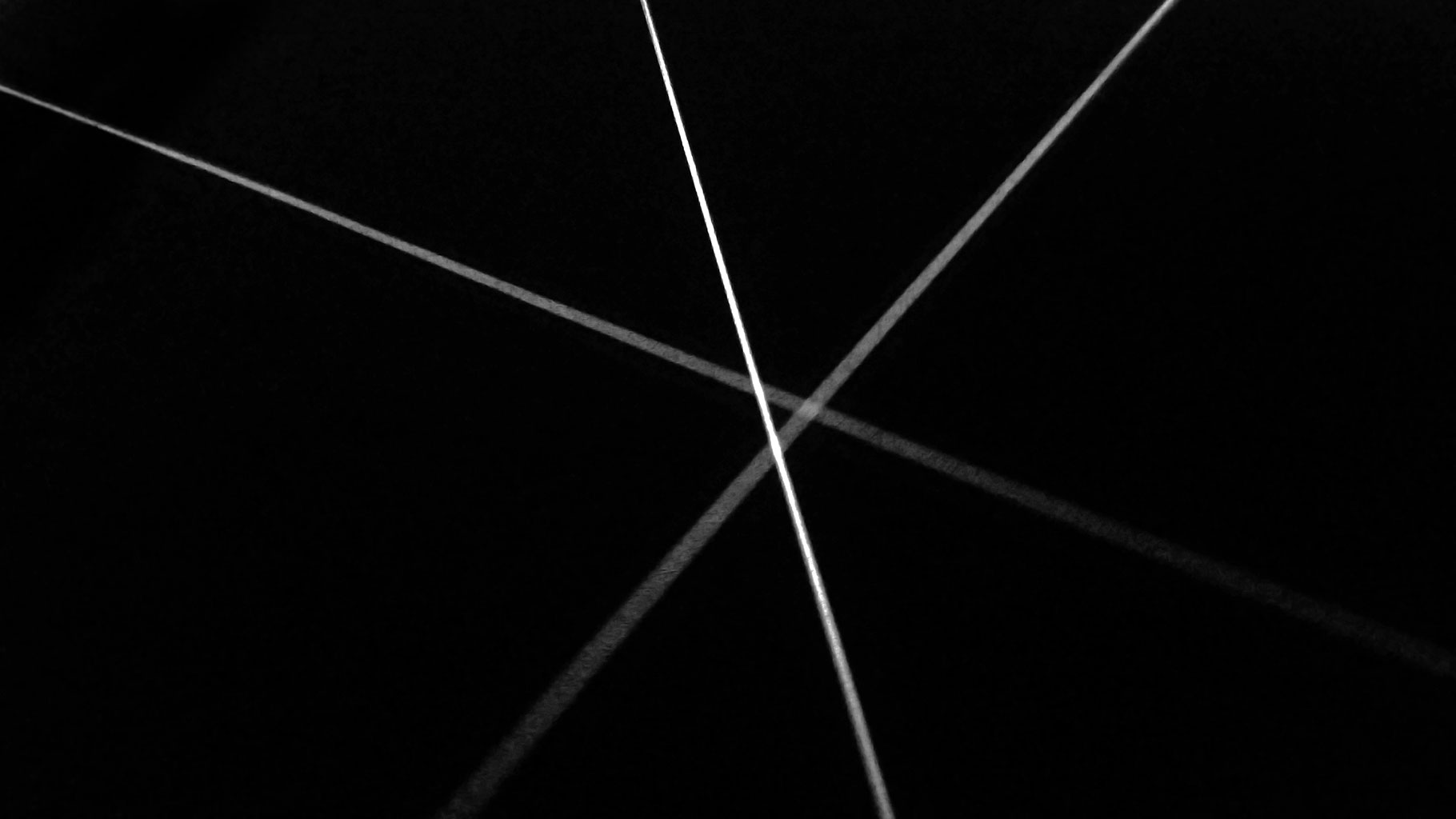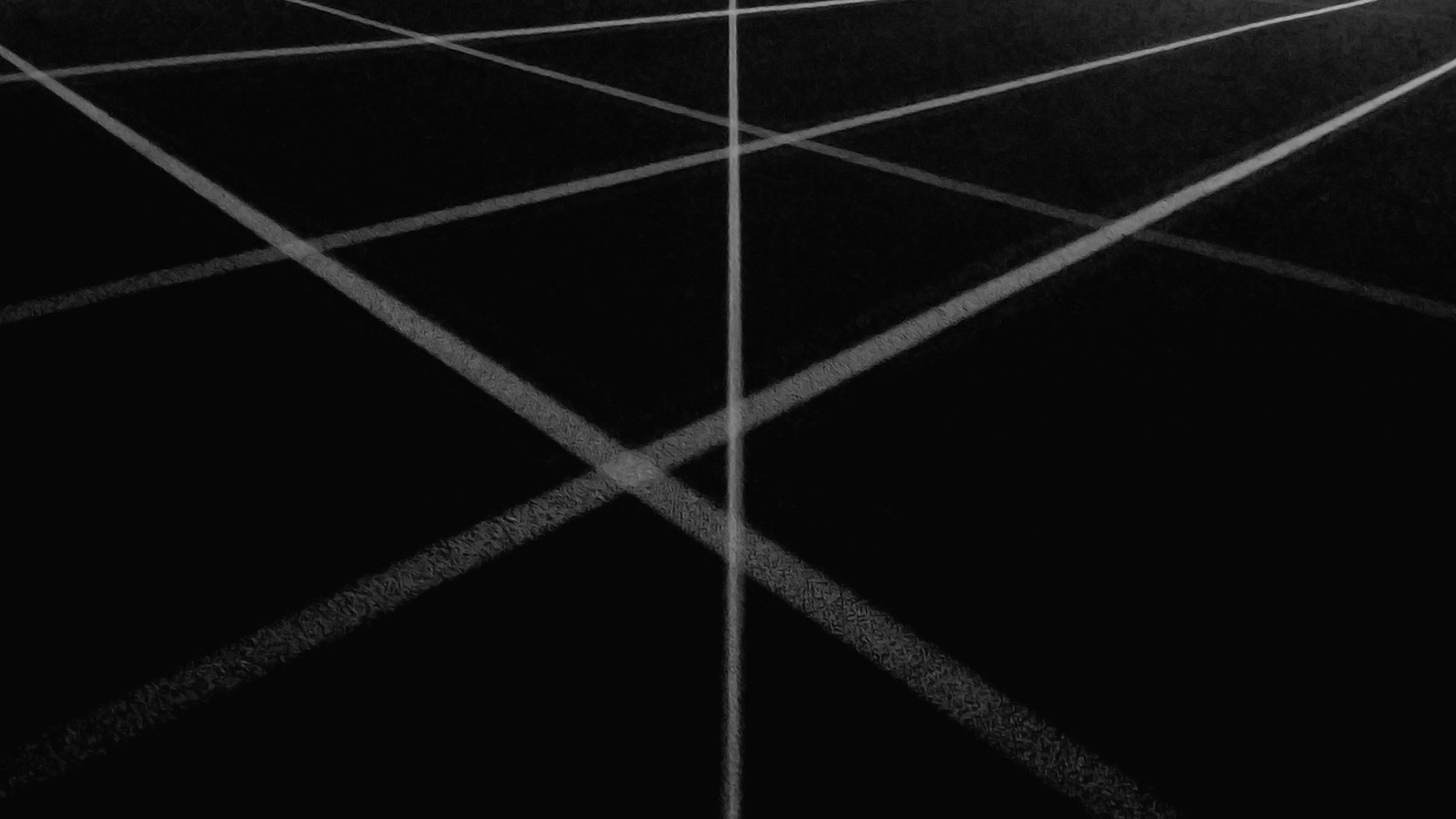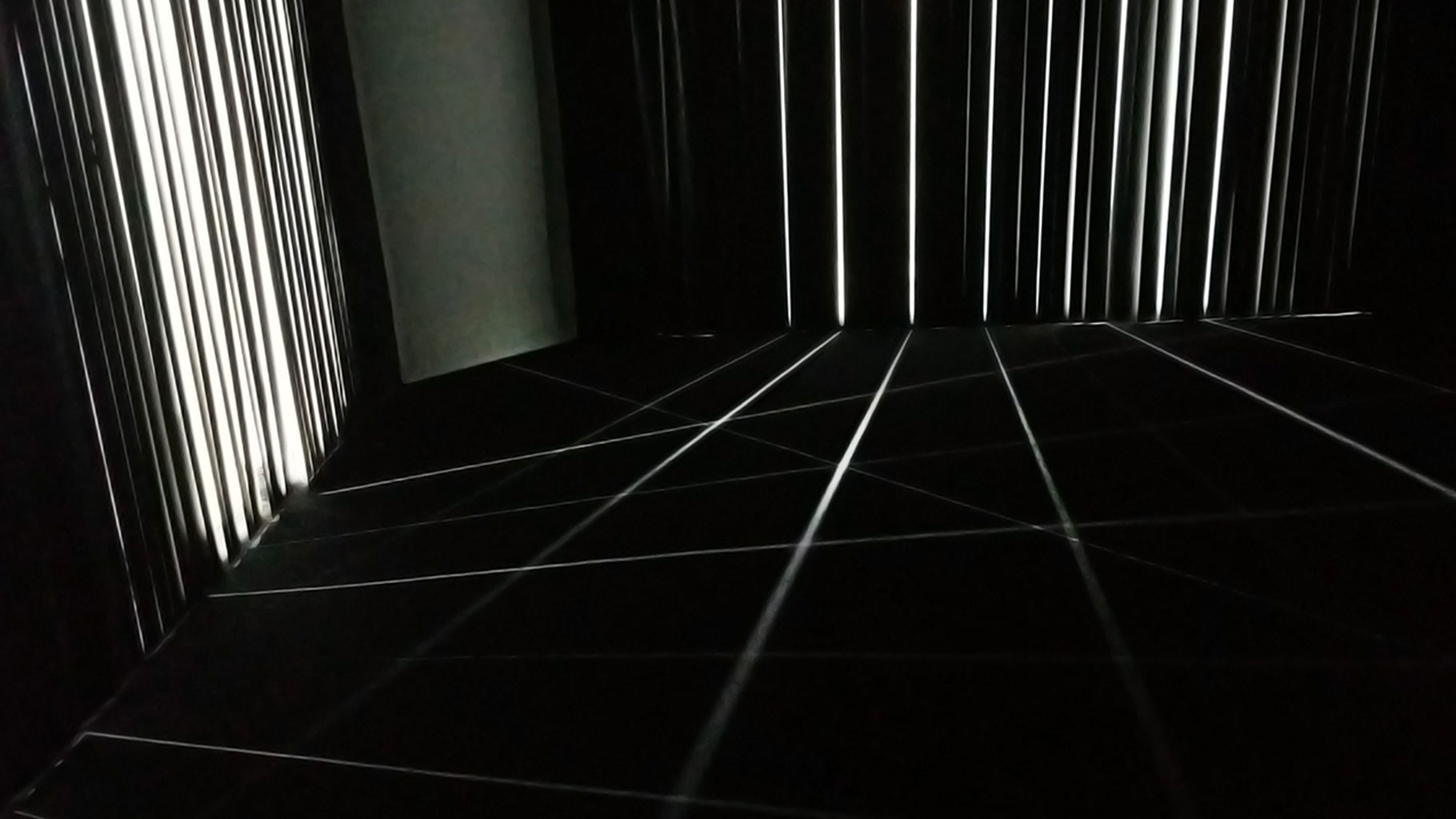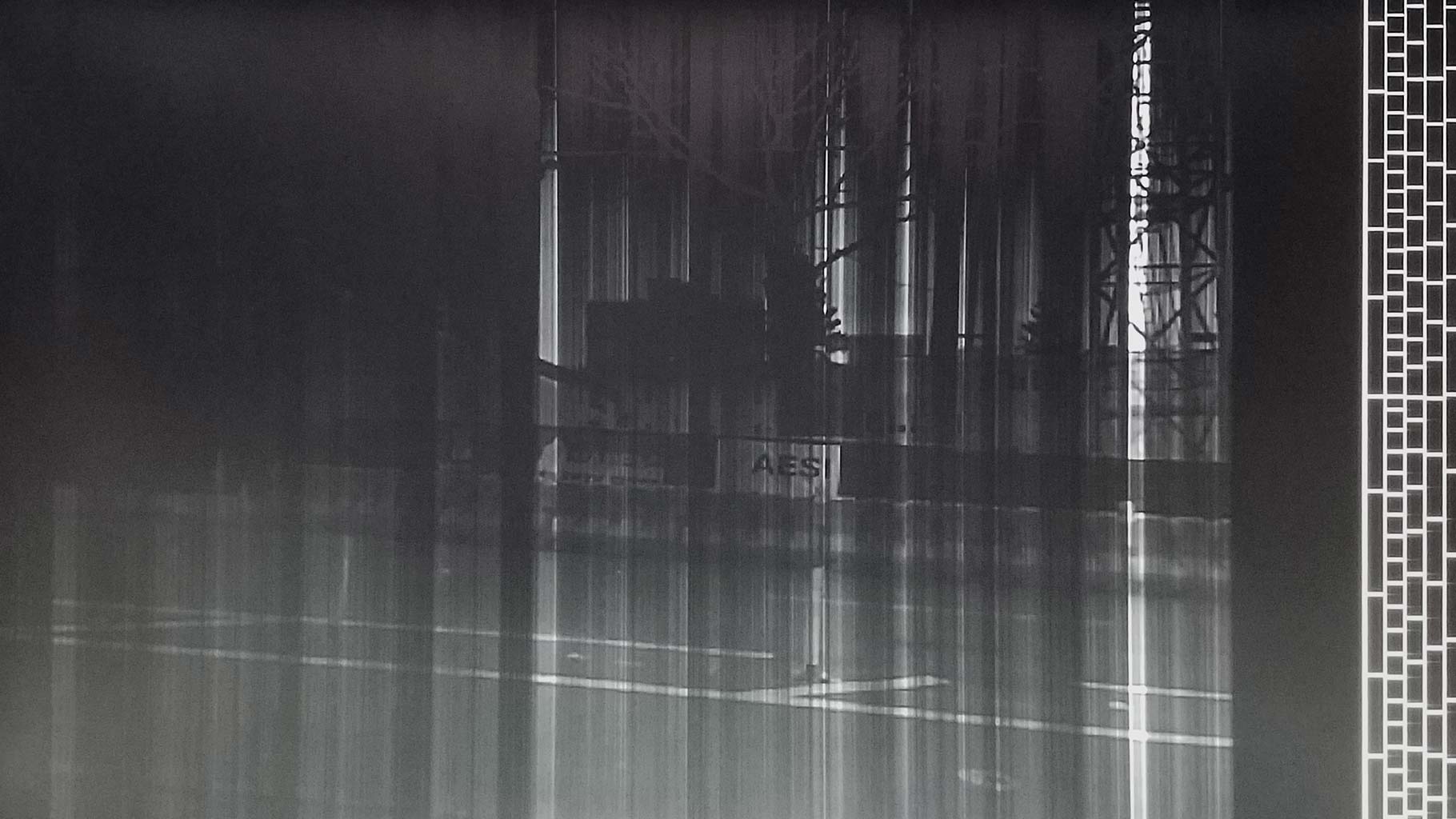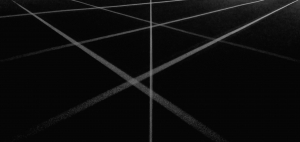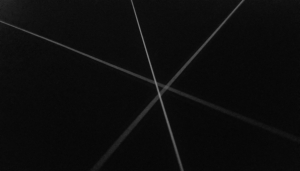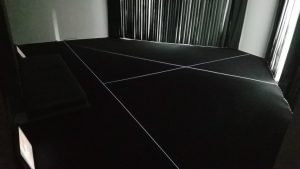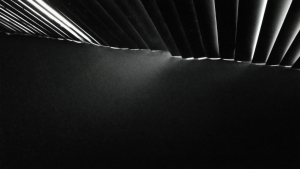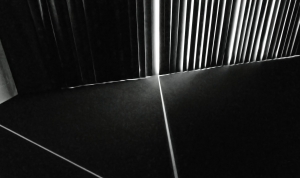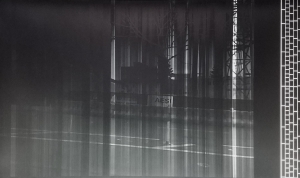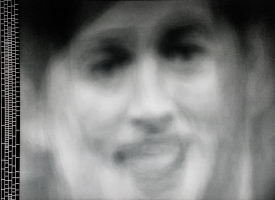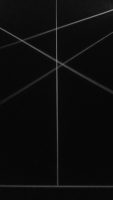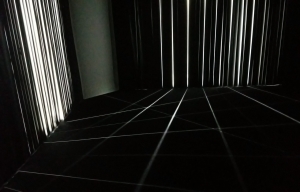2018-2020
Kinetic light installation
Window blinds, LED lights, motors, projection mapping
Jack Straws New Media Gallery, Seattle.WA Feb 9th~Mar 30th, 2018
black vertical window-blinds, motorized kinetic system, LED flood lighting, radio, tv receiver, computer
dimension varies
Blind Film is a series of installations that transform familiar architectural objects into unstable sites of perception. The work begins with a fleeting observation—a stripe of light slipping through a window blind. This moment of discontinuity, fragile and easily overlooked, becomes a point of departure for exploring how absence, rupture, and distance generate perceptual traces that persist across body and memory.
Vertical blinds are reconfigured into kinetic systems, each concealing an LED light that intermittently illuminates through mechanical disruption. Stripes of light leak across the darkened gallery and intersect with a projected T-shaped line that divides the space. Its vertical axis splits two corner installations, while the horizontal line marks the viewer’s position, recalling the geometry of a tennis court. The projection reorganizes spatial relations between audience and installation, positioning light as both boundary and connective field.
Through these interactions, light functions not as representation but as material that structures perception. Architectural form, projection, and motion overlap to create an environment where seeing becomes tactile and temporal. Blind Film reconstructs the familiar into a field of shifting presence, revealing light as both divider and connector between analog and digital experience.
https://www.jackstraw.org/exhibit/sangjun-yoo-blind-film/
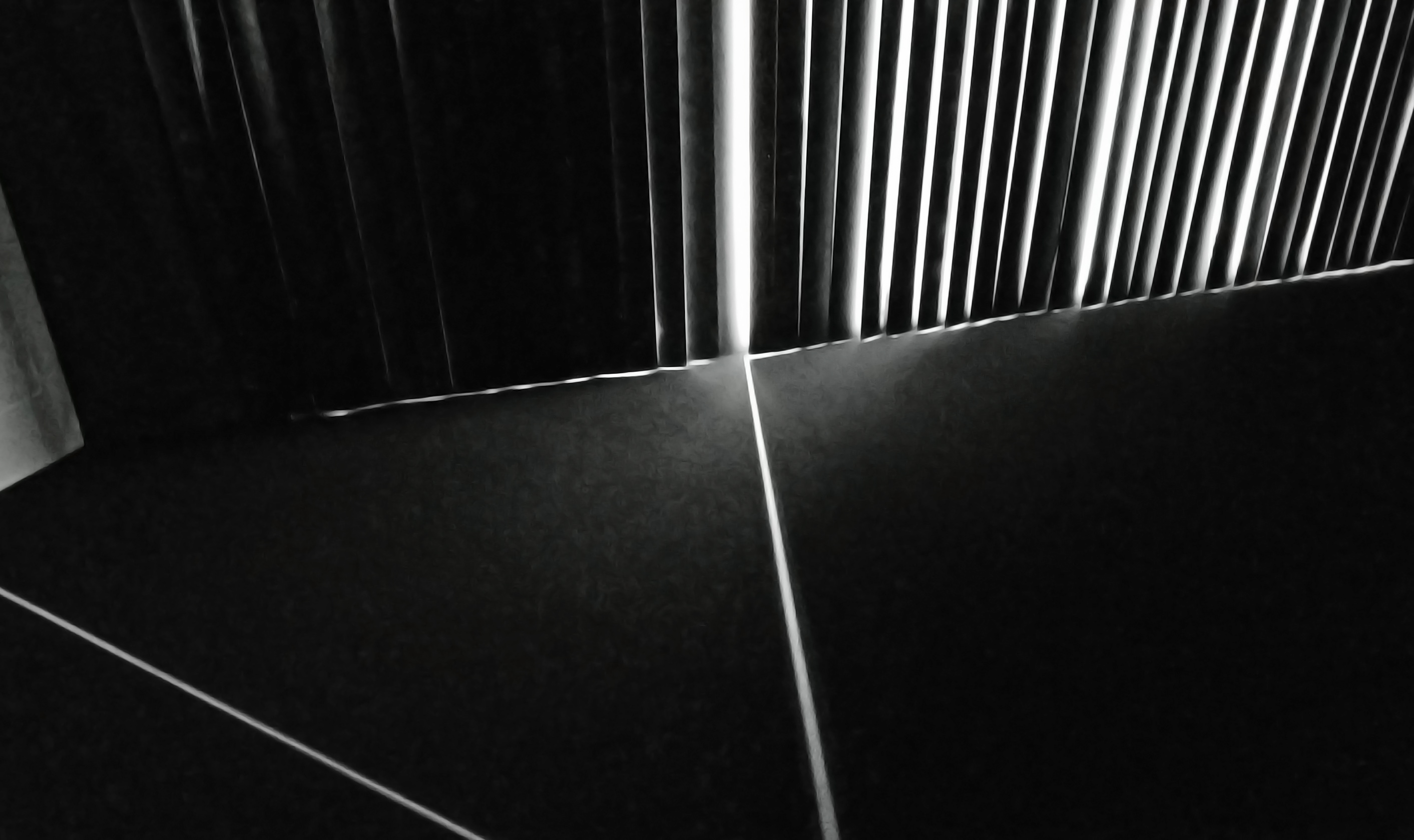
 blind film
blind film  blind film - prototype
blind film - prototype 